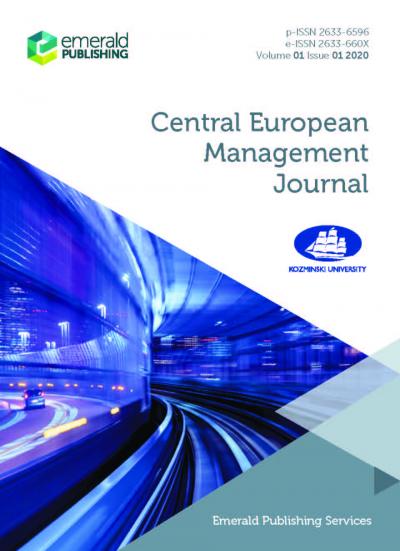The Importance of Innovation in the Development of Polish Business Gazelles
Agnieszka Kuś
Nicolaus Copernicus University in Torun
2020 28 (1) Central European Management Journal
DOI 10.7206/cemj.2658-0845.14







